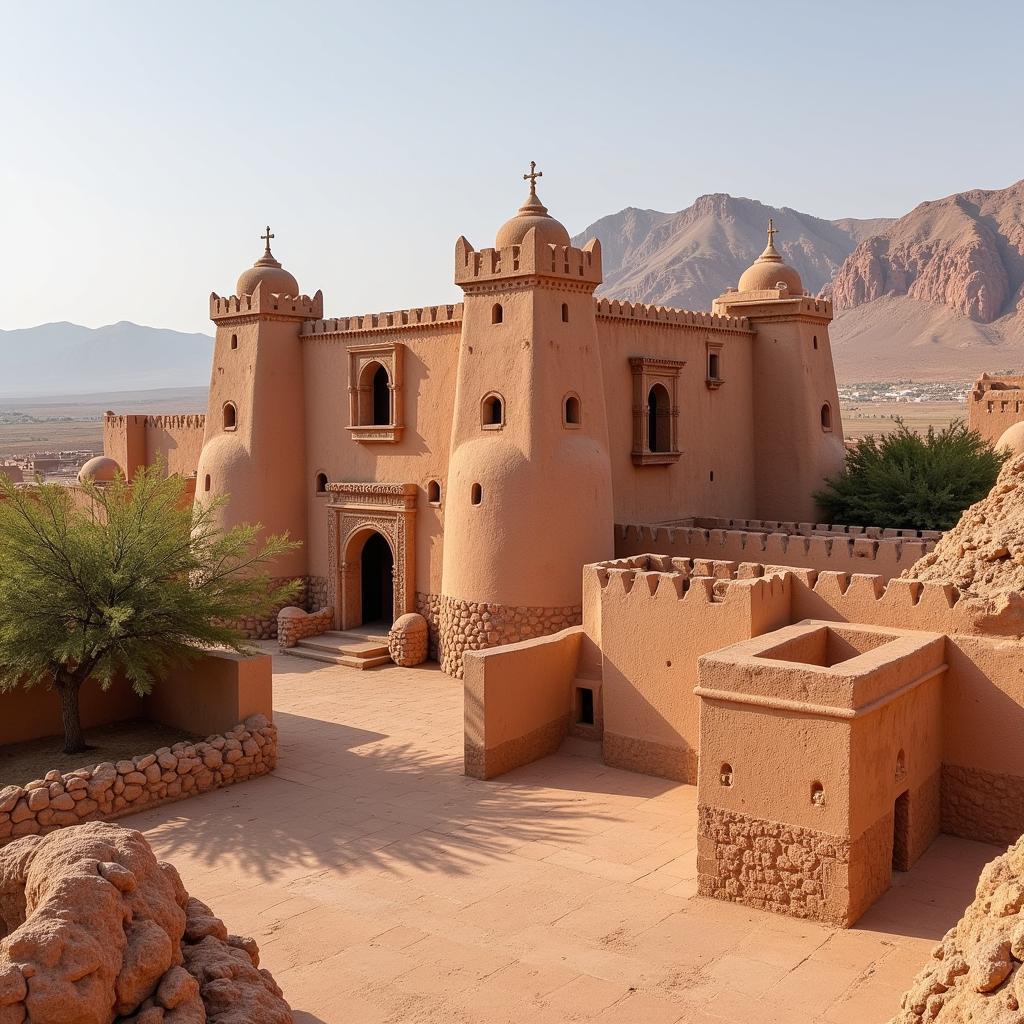Exploring African Architecture Examples: A Journey Through Diverse Styles and Traditions
African architecture offers a rich tapestry of diverse styles, reflecting the continent’s varied climates, cultures, and resources. From ancient monuments to modern innovations, African Architecture Examples showcase a unique blend of functionality, artistry, and cultural significance. This exploration delves into the captivating world of African architectural design, highlighting its historical roots and contemporary adaptations.
Ancient Wonders: A Testament to African Ingenuity
The history of African architecture stretches back millennia, showcasing incredible ingenuity and adaptability. Ancient civilizations like the Egyptians, Nubians, and Aksumites left behind impressive structures that continue to inspire awe. The pyramids of Giza, for example, stand as iconic testaments to Egyptian engineering prowess. Similarly, the Nubian pyramids, though smaller, boast steeper slopes and unique decorative elements. Further south, Great Zimbabwe, a medieval city built of stone, exemplifies the architectural skills of the Shona people. These ancient African architecture examples demonstrate a deep understanding of geometry, materials, and construction techniques.
Let’s delve into specific examples of vernacular architecture, often reflecting local traditions and utilizing readily available materials.
Vernacular Architecture: Embracing Local Traditions and Resources
Vernacular architecture across Africa demonstrates the ingenious use of local materials and adaptation to diverse climates. In North Africa, earthen architecture, using materials like adobe and rammed earth, provides natural insulation against extreme temperatures. Think of the traditional Kasbahs of Morocco, with their thick walls and intricate decorative patterns. Similarly, in West Africa, the Dogon people of Mali are known for their distinctive cliff dwellings and granaries, built into the Bandiagara Escarpment. These structures, crafted from mud and wood, blend seamlessly with the surrounding landscape. These African architecture examples demonstrate a harmonious relationship between human settlements and the natural environment.
 Traditional Moroccan Kasbah Architecture
Traditional Moroccan Kasbah Architecture
Moving further south, we encounter fascinating architectural adaptations in regions with different climatic conditions and available resources. For example, the conical houses of the Himba people in Namibia, constructed from mud and dung, offer effective protection against the harsh desert environment.
Modern African Architecture: A Fusion of Tradition and Innovation
Contemporary African architecture is witnessing a dynamic fusion of traditional elements and modern design principles. Architects are increasingly drawing inspiration from the continent’s rich architectural heritage while embracing sustainable and innovative technologies. This approach is evident in projects like the Zeitz MOCAA in Cape Town, South Africa, which repurposed a historic grain silo into a striking museum of contemporary African art. Another example is the Bosco Verticale in Milan, Italy, which, while not located in Africa, takes inspiration from African vernacular architecture with its integrated vertical gardens. This evolving landscape of African architecture examples reflects a growing awareness of cultural identity and environmental responsibility.
African design patterns often incorporate symbolic meanings and reflect the unique cultural heritage of various African communities. Furthermore, exploring discussions surrounding African Barbarians can offer insights into the historical context and complexities of cultural interactions. You can also find more information about African Gods PDF for further exploration.
While there are claims about the connection between African Aztec cultures, it’s important to approach such assertions with critical analysis. Additionally, examining the evolution of African American culture today provides valuable context for understanding the diaspora’s influence on global artistic expression.
Conclusion: Celebrating the Diversity of African Architecture
African architecture, in all its diverse forms, offers a captivating window into the continent’s rich history, vibrant cultures, and evolving future. From the monumental structures of ancient civilizations to the innovative designs of contemporary architects, African architecture examples demonstrate a profound connection between people, place, and culture. By exploring these diverse architectural traditions, we gain a deeper appreciation for the ingenuity, creativity, and cultural significance embedded within the built environment of Africa. As we continue to learn from and celebrate these remarkable architectural achievements, we contribute to a greater understanding of Africa’s unique contributions to the global architectural landscape.
FAQ
- What are some key characteristics of traditional African architecture?
- How does climate influence architectural design in Africa?
- What are some examples of sustainable practices in African architecture?
- How is modern African architecture incorporating traditional elements?
- What are some notable contemporary African architects?
- Where can I find more resources on African architecture?
- How does African architecture reflect cultural identity?
Need Help?
For further assistance or inquiries, please contact us:
Phone: +255768904061
Email: kaka.mag@gmail.com
Address: Mbarali DC Mawindi, Kangaga, Tanzania
Our customer service team is available 24/7.
You might also be interested in learning more about African design patterns or exploring the rich tapestry of African Gods.


